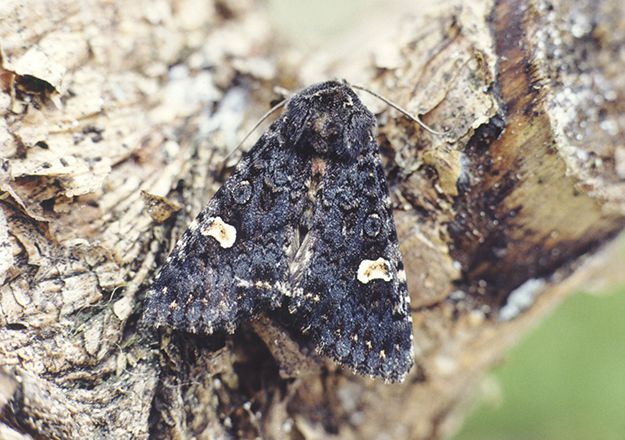- info@sirhowyhillwoodlands.co.uk
- Thomas Ellis Way, Tredegar NP22 4QF
- About Us
- Get involved
- Visit Us
Visit Tredegar & our Woodlands
Come and visit us!
Sirhowy Hill Woodland
Thomas Ellis Way
Tredegar
Blaenau Gwent
NP22 4QF - Wildlife
- Woodland Shop
Latest and greatest products, direct from our
Woodland Shop
Sourced from the Woodlands and the local community.
You have
item(s) in your bag
- Home
- /
- Blog
- /
- Animals & Wildlife
- /
- Moths
- /
- Dot Moth

Scientific name: Melanchra persicariae
Dot Moth
Late June to August. Common to southern Britain, more local in the north of its range.
An unmistakeable moth with broad, glossy black wings and a large conspicuous white kidney mark.
The larvae can be seen from August to October feeding both at day and night, resting on the foodplant. They overwinter underground as pupae.
What does the Dot Moth eat?
The Dot Moth eats a wide range of wild and cultivated herbaceous plants including Common Nettle (Urtica dioica), Hop (Humulus lupulus), Field Bindweed (Convolvulus arvensis), Broad-leaved Dock (Rumex obtusifolius), Groundsel (Senecio vulgaris), White Clover (Trifolium repens), Black Currant (Ribes nigrum), Ivy (Hedera helix), Hazel (Corylus avellana), Elder (Sambucus nigra) and willows.
What habitat does the Dot Moth live in?
The Dot Moth lives in gardens and hedgerows and a wide range of open and wooded habitats.
What family does the Dot Moth belong to?
The Dot Moth belong to the Noctuidae family.

Click to view more
Statistics
Scientific Name
Melanchra persicariae
Location
England, Wales, Scotland and Ireland
Size
Medium sized
Wingspan Range: 32-42mm
Population
Common and widespread in southern Britain and the southern half of Ireland.

Other Wildlife







